Last updated on August 22, 2023
Pappardelle 🍝 Authentic Italian pasta recipes
Similar to tagliatelle but wider, pappardelle is a type of Italian pasta from Tuscany. We share traditions and make the recipe for pappardelle with mushrooms
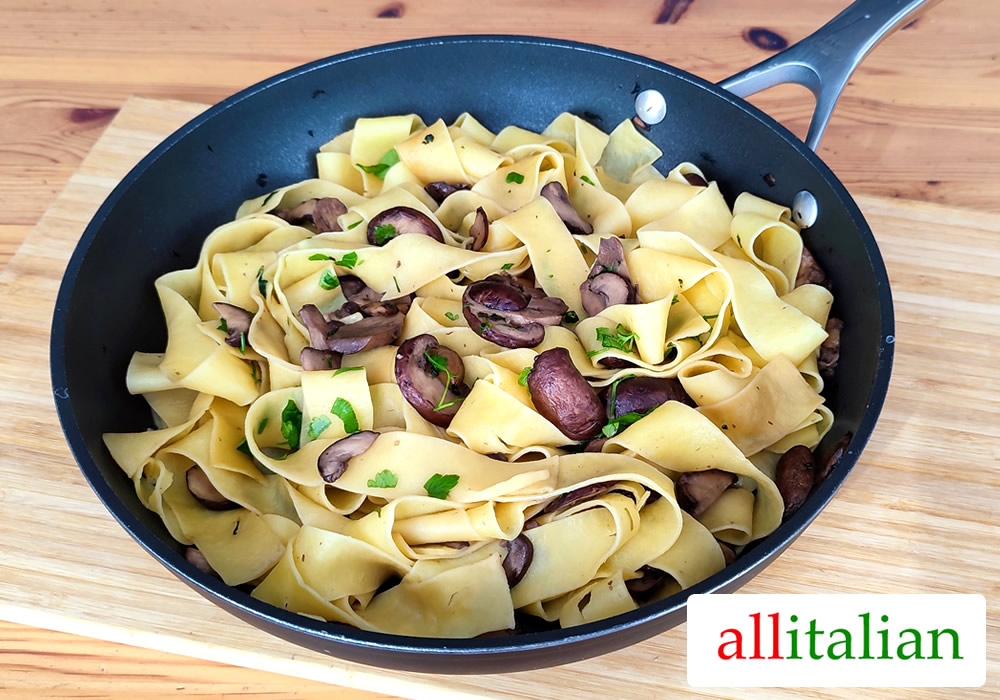
Last updated on August 22, 2023
Similar to tagliatelle but wider, pappardelle is a type of Italian pasta from Tuscany. We share traditions and make the recipe for pappardelle with mushrooms

Pappardelle is a type of long Italian egg pasta typical of Tuscany. Traditionally it's made fresh, but you can find it dried in the supermarket here in Holland as well. Pappardelle are made with flour, eggs and salt; like tagliatelle, which instead is typical of Emilia.
A pappardella is very long, about 8 inches / 20 centimeters , and thin: dried ones are less than 0.04 inches / 1 mm thick. The surface is rough and porous, and in Italy we appreciate it because it captures the sauce well.
According to the Tuscan tradition, pappardelle are well accompanied by meat sauces such as wild boar, or with mushrooms such as porcini: typical of the region's cuisine.
In this page we prepare a delicious plate of pappardelle with champignons mushrooms, step by step.
In Tuscany they cook pappardelle with porcini mushrooms, 🔊 funghi porcini in Italian, characteristic of the region and widely used in Italian cuisine.
We prepared pappardelle with mushrooms, which we can easily find here in the Netherlands.
In this recipe we see step by step the cooking of the pappardelle and at the same time the preparation of the sauce: in about 25 minutes we make a relatively light and rather tasty dish.
| Ingredient image | Ingredient name | Cups | Grams | Ounces |

|
Pappardelle | 6.3 oz | 180 g | |
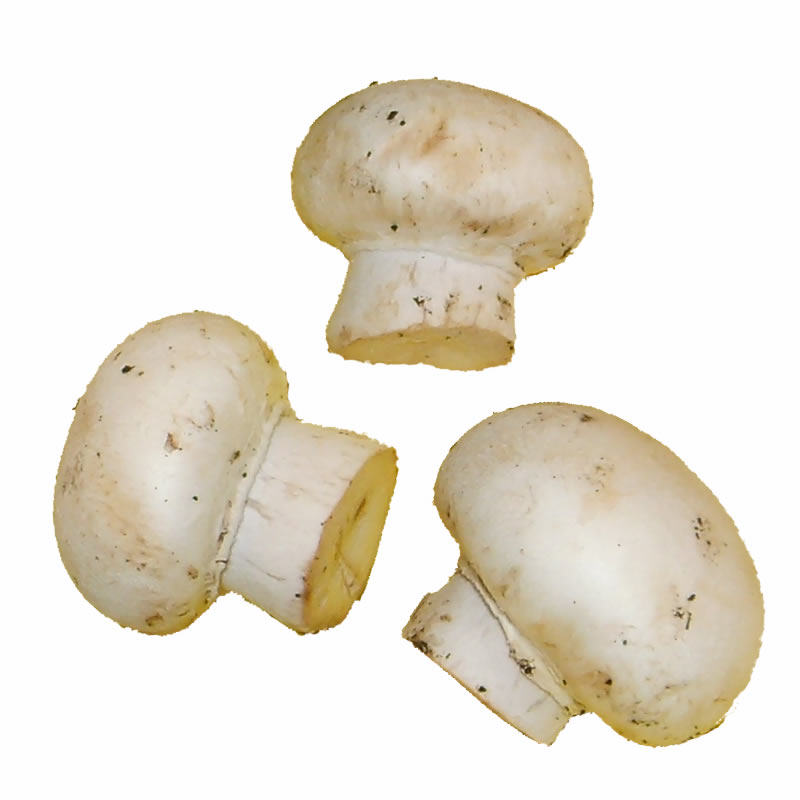
|
Mushrooms | 8.8 oz | 250 g | |
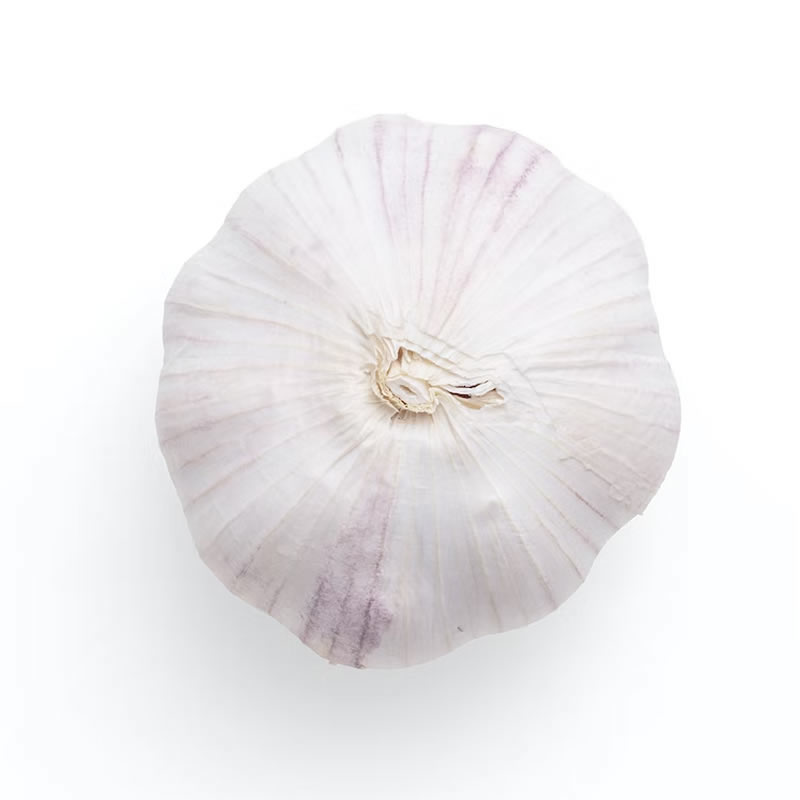
|
Garlic | 1 clove | ||
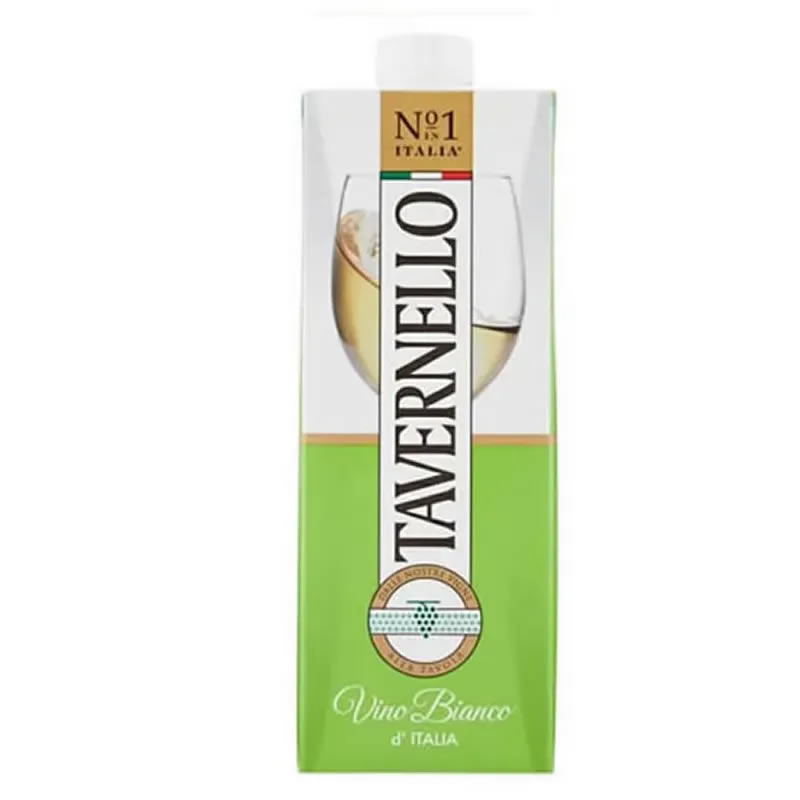
|
White wine | 1 splash | ||

|
Parsley | 1 sprig | ||

|
Extra Virgin Olive Oil | 1 tablespoon | ||

|
Salt | 1 pinch |
You can use both, fresh or dry pappardelle. The dried ones are easier to find outside Italy; we used the ones from brand De Cecco.
👉 Handle dried pappardelle with care before preparing them: they are very easy to break. The pappardelle, on the other hand, must be completely submerged in water.
The cooking time indicated on the packaging is only 6 minutes: we have found that even if they are cooked a little longer, they remain al dente.
It Italian Ministry of Health estimates that a portion of pasta is about 2.8 oz / 80 grams - 3.5 oz / 100 grams of dried pasta, or 3.5 oz / 100 grams of fresh pasta. We stay in the middle and use 3.2 oz / 90 grams per person. 🤓
In Italy we follow this rule for cooking water: 1 liter / 1 US quart of water for every 3.5 oz / 100 grams of pasta. This amount of water is sufficient for both short and long pasta such as spaghetti, bucatini and pappardelle.
A similar rule applies to the amount of salt: for every liter / quart of water we add 0.35 oz / 10 g of coarse salt.
We recommend a large pan so that the pappardelle «nests» have enough space to cook.
After soaking the pappardelle, stir briefly to prevent the pasta from sticking. Mix carefully, because pappardelle that is still raw breaks easily.
👉 Also check out our guide on how to cook pasta al dente.
We used fresh champignons, but you can also use other types of mushrooms, or even a mix.
Fresh mushrooms are excellent to cook in a pan: we cook them after adding garlic and parsley. In Italy we call mushrooms sliced and cooked in a pan 🔊 funghi trifolati.
The mushrooms should not be washed with water, otherwise they will absorb it, but simply cleaned with a slightly damp cloth: after which they are ready to be sliced.
We use parsley both baked and raw. Unlike basil, which we often add when the dish is ready, parsley also releases its aroma in olive oil and we add it to a pan with oil and garlic.
Optionally, you can also use a finely chopped red bell pepper to fry with the parsley. The red pepper completes the dish by adding a spicy touch.
If necessary, clean the mushrooms with a slightly wet cloth. As stated on the packaging, the mushrooms you buy in the supermarket have already been cleaned.
👉 Never immerse the mushrooms in water: they will become soft and are no longer good for our pasta sauce.
Cut the mushrooms vertically into slices about half a centimeter thick.
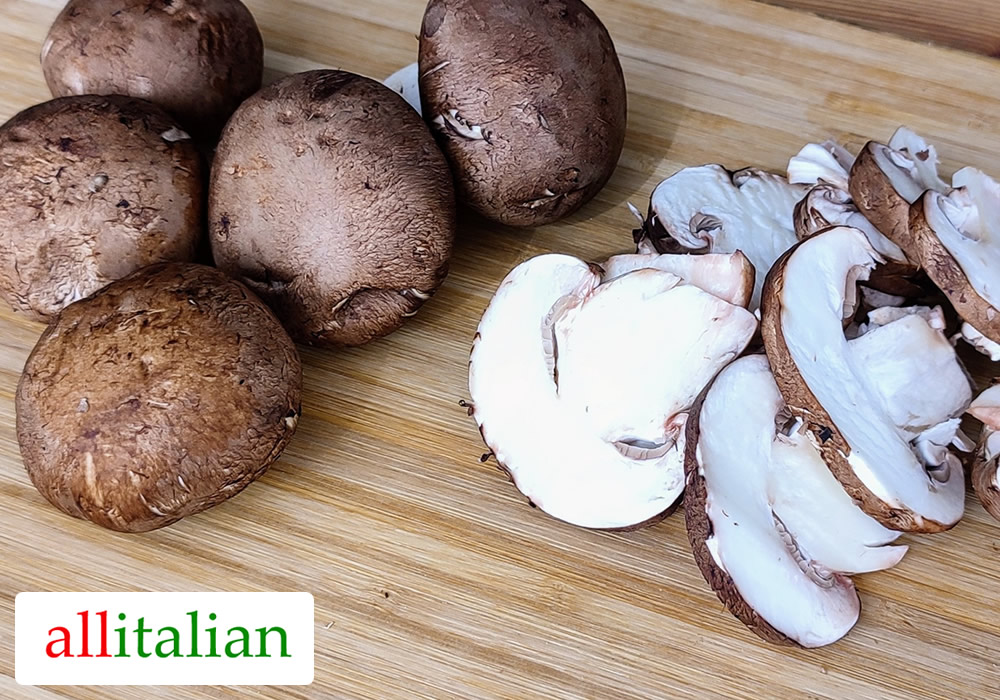
Pour cold water into a large pot and bring it to a boil.
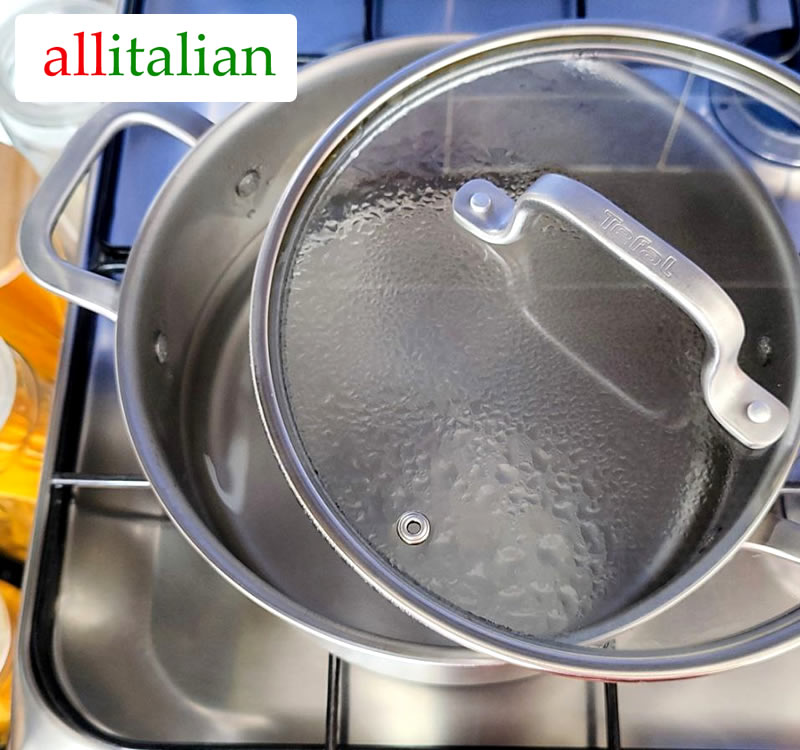
In a pan, heat the olive oil and a peeled garlic clove over low heat. Also add the finely chopped parsley.
Saute the garlic for a couple of minutes, making sure it stays white. Then remove the garlic and add the mushrooms.
Mix well and deglaze with a drop of white wine over medium heat.
Add salt and pepper, then continue cooking the mushrooms in the pan over low heat while the pasta cooks.
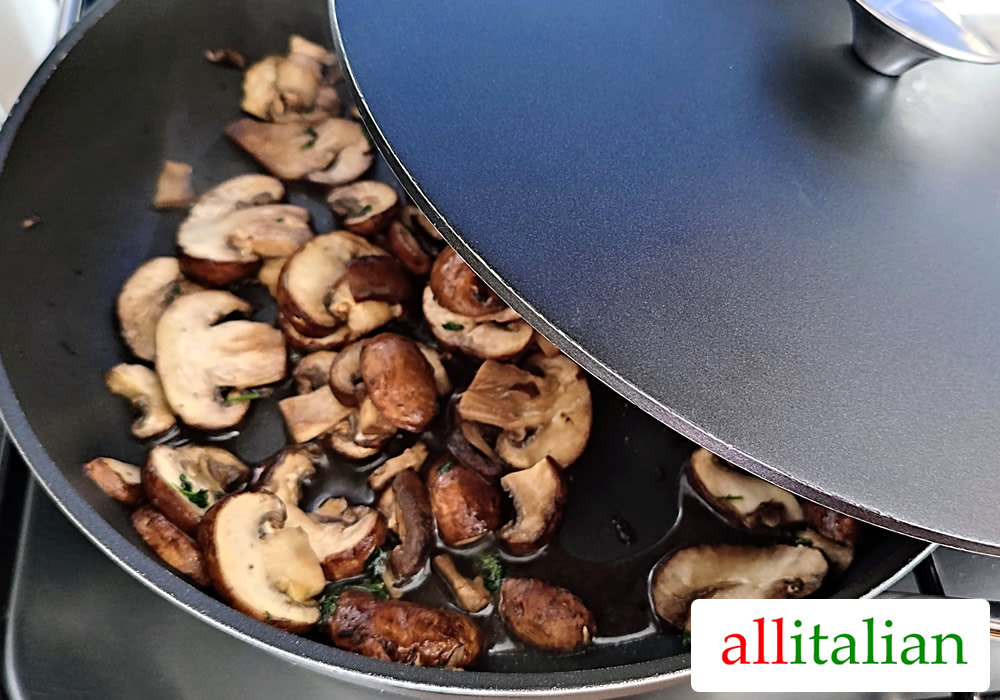
When the water boils, add the coarse salt, wait a few moments for the water to boil again, and then add the pappardelle. Stir immediately to prevent them from sticking.
Roer onmiddellijk om te voorkomen dat ze gaan plakken.
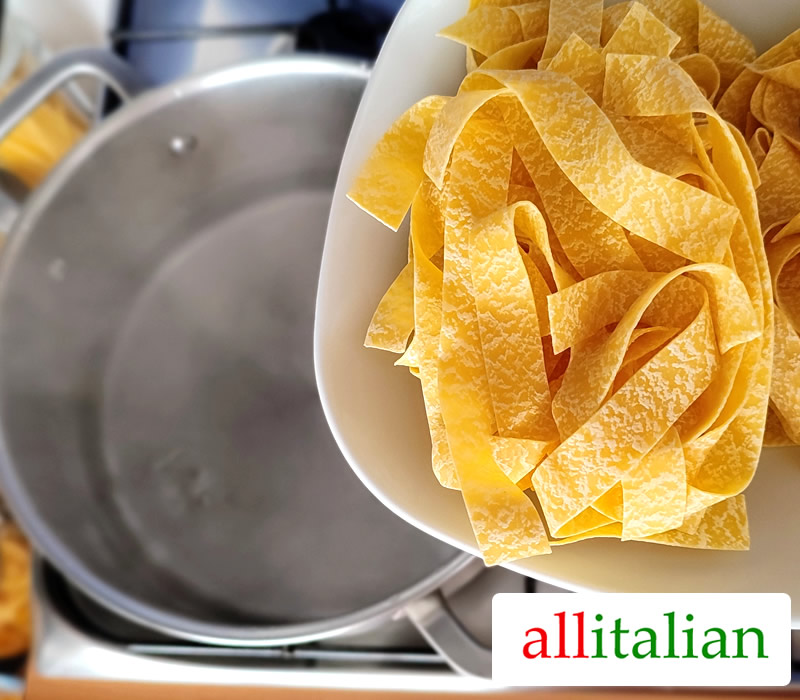
The indicated cooking time is 6 minutes, but we don't trust it and taste a pappardella.
If it is almost ready, put the pappardelle with a spaghetti spoon in the pan with the mushrooms.
Add half a ladle of cooking water if the sauce is too dry.
Mix well and cook for another minute until the pappardelle are done.
👉 Mixing pasta and sauce in a pan over low heat is called in Italian: 🔊 risottatura della pasta, and is used to better mix pasta and sauce, just like a risotto.
Add a drizzle of olive oil, more chopped parsley and serve the pappardelle with mushrooms on plates.

Your Pappardelle with mushrooms is ready. Buon appetito! 🍝
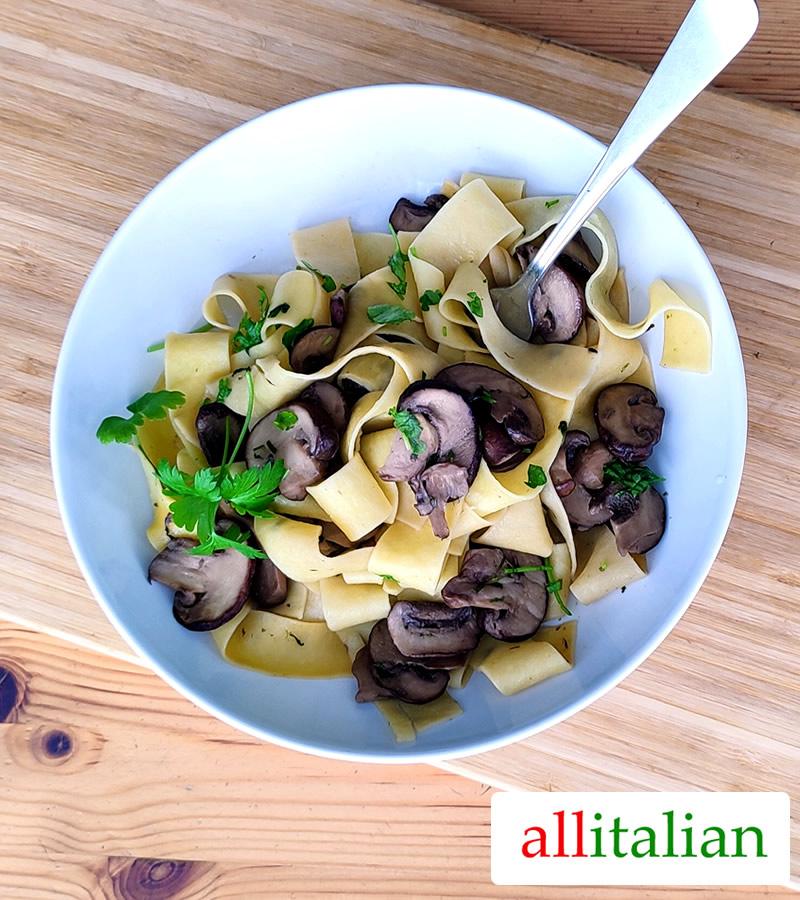
In the restaurant in Italy, when you finish eating, the waiter will ask: 🔊 andava tutto bene? (was everything fine?)
In Italy, fresh pasta made with flour and eggs is traditionally associated with Northern Italy and especially with nearby Emilia; in Northern Italy, the soft wheat used to make flour was actually grown.
Pappardelle is therefore a version of tagliatelle, as the name suggests.
In Italy we call pasta like pappardelle «pasta a nido», pasta in the shape of a nest: due to the shape in which it is preserved, of course.

Tagliatelle is about 0.3 inches / 8mm wide, according to the Accademia della Cucina Italiana. Instead pappardelle is 0.7 to 1.5 inches (2 to 4 cm); the De Cecco brand pappardelle that we use in our recipe are 0.7 inches / 2 cm wide when dried, and still widen when cooked.
Apart from width, pappardelle and tagliatelle share all other characteristics: they are made with the same ingredients and the surface has the same texture and roughness.

However, the sauces with which they are prepared are different: pappardelle is usually cooked together with traditional Tuscan sauces.
Tuscan cuisine is known in Italy for its thick and rich sauces; it is rich in meat, game and especially wild boar, accompanied by mushrooms and truffles.
And pappardelle can be perfectly combined with a meat sauce thanks to their porous surface.
Pappardelle naturally tastes excellent if you prepare it with sauces that are not typically Tuscan, such as Bolognese sauce, with grilled vegetables or with a simple tomato sauce.
Here in the Netherlands we don't easily find wild boar meat, but we prepare pappardelle with champignon mushrooms, a light dish that reminds us of the flavors of Tuscany.
What does pappardelle mean? In the Tuscan dialect, 🔊 pappa the food and 🔊 pappare to eat. Hence the word «pappardelle», referring to the tagliatelle from the nearby region of Emilia.
In Italian we also say pappardella for something very long: for example, a long text or an endless speech is popularly called a pappardella called.
The Italian words we use on this page:
| 🔊 Pappardelle | Pappardelle |
| 🔊 Pasta Italiana | Italian pasta |
We frequently update our pages on Italian pasta with new classic and regional traditional recipes.